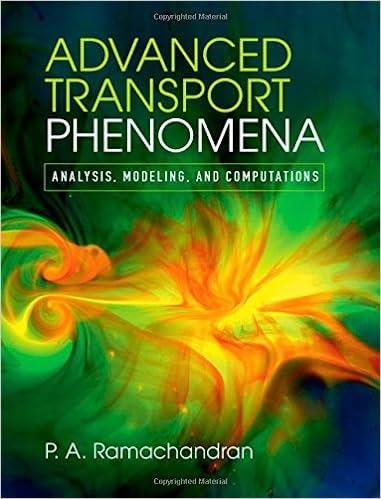Repeat the calculations for the previous problem if the fluid were water instead of air. In which
Question:
Repeat the calculations for the previous problem if the fluid were water instead of air. In which case do you expect the maximum velocity to be higher?
Previous Problem:
A vertical plate \(3 \mathrm{~m}\) long is at a temperature of \(400 \mathrm{~K}\) and exposed to air at \(300 \mathrm{~K}\). Calculate the thickness of the boundary layer and the value of the local heat transfer coefficient as a function of (the vertical) distance along the plate.
Assume the flow remains laminar all the way.
Fantastic news! We've Found the answer you've been seeking!
Step by Step Answer:
Related Book For 

Advanced Transport Phenomena Analysis Modeling And Computations
ISBN: 9780521762618
1st Edition
Authors: P. A. Ramachandran
Question Posted:





